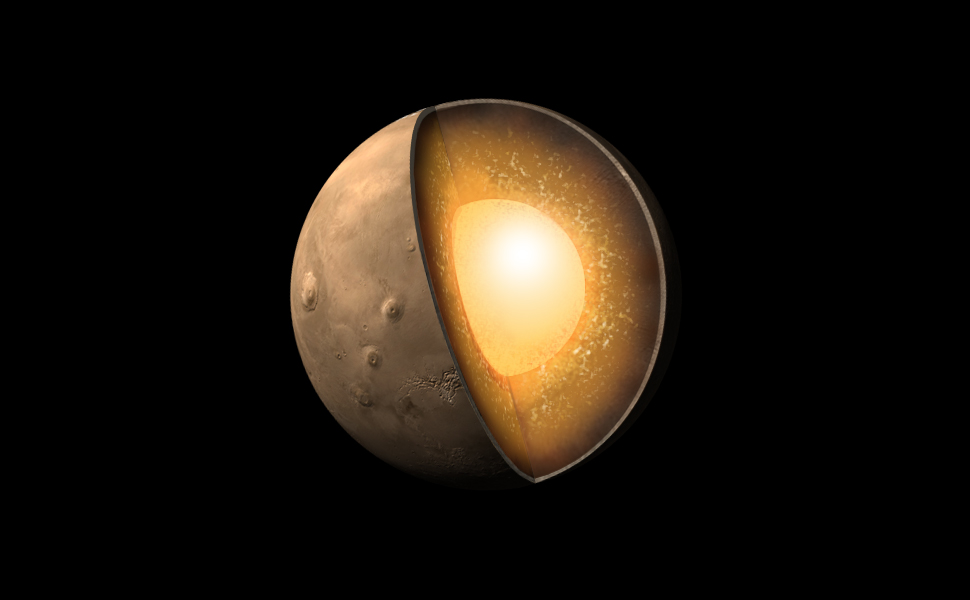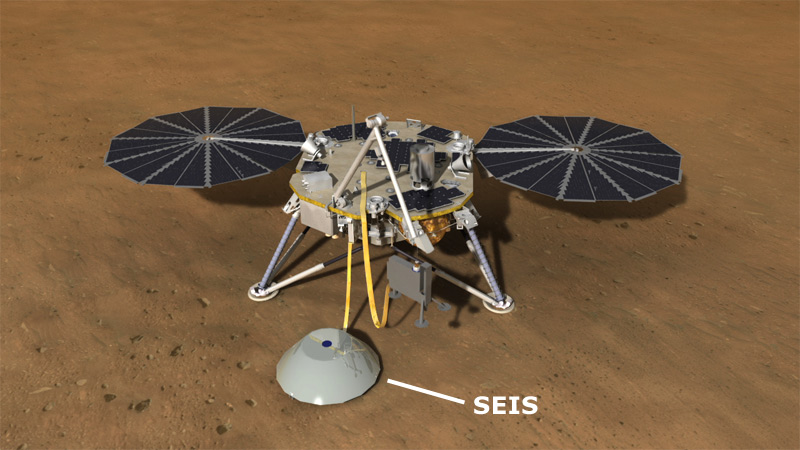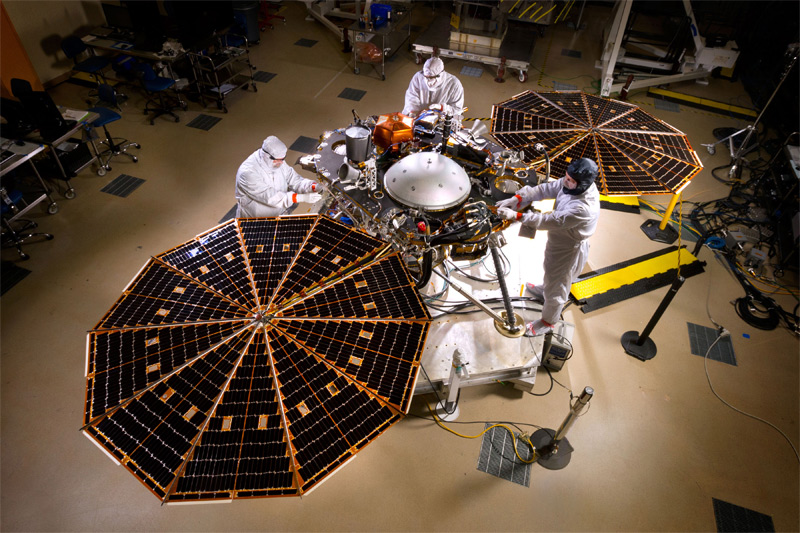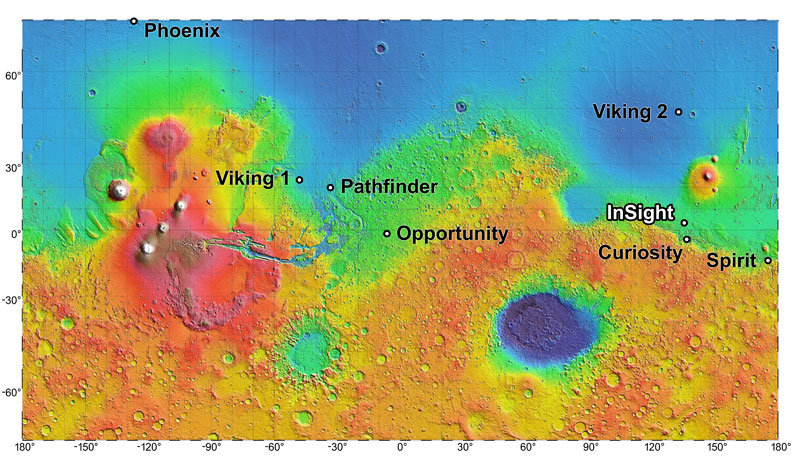
28th December 2015 InSight mission to Mars postponed until at least 2018 NASA has postponed its launch of the InSight Mars mission in March 2016, due to an air leak in one of the primary scientific instruments. It is currently unclear if the mission will be cancelled entirely or delayed until 2018.
After thorough examination, NASA managers have decided to suspend the planned March 2016 launch of the Interior Exploration using Seismic Investigations Geodesy and Heat Transport (InSight) mission. This follows unsuccessful attempts to repair a leak in part of the prime instrument in the science payload. "Learning about the interior structure of Mars has been a high priority objective for planetary scientists since the Viking era," said John Grunsfeld, Associate Administrator for the Science Mission Directorate at NASA's HQ in Washington, D.C. "We push the boundaries of space technology with our missions to enable science, but space exploration is unforgiving, and the bottom line is that we're not ready to launch in the 2016 window." The instrument involved is the Seismic Experiment for Interior Structure (SEIS), a seismometer provided by France's Centre National d'Études Spatiales (CNES). Designed to measure ground movements as small as the diameter of a single atom, it could detect signals from marsquakes, meteorite impacts, local events like dustdevils or landslides, and even the tiny tidal deformation of Mars induced by its moon Phobos. The SEIS requires a vacuum seal around its three main sensors to withstand the harsh conditions of the Martian environment.
"InSight's investigation of the Red Planet's interior is designed to increase understanding of how all rocky planets, including Earth, formed and evolved," explains Bruce Banerdt, InSight Principal Investigator at NASA's Jet Propulsion Laboratory in California. "Mars retains evidence about the rocky planets' early development that has been erased on Earth by internal churning Mars lacks. Gaining information about the core, mantle and crust of Mars is a high priority for planetary science, and InSight was built to accomplish this." A leak earlier this year that had previously prevented the seismometer from retaining vacuum conditions was repaired, and the mission team was hopeful the most recent fix would be successful. However, during testing last week in extreme cold temperature (-49°F/-45°C) the instrument again failed to hold a vacuum. NASA officials have now determined that there is insufficient time to resolve another leak, and complete the work and thorough testing required to ensure a successful mission. "It's the first time ever that such a sensitive instrument has been built," said Marc Pircher, CNES Director. "We were very close to succeeding – but an anomaly has occurred, which requires further investigation. Our teams will find a solution to fix it, but it won't be solved in time for a launch in 2016."
The relative positions of Earth and Mars mean the best launch opportunities occur for only a few weeks every 26 months. The current launch window for InSight runs from 4th–30th March 2016. "When you know you’re going to miss the window, it’s essentially game over, at least for this opportunity," said Grunsfeld. "This is a case where the alignment of the planets matters, and to get from Earth to Mars in the most efficient manner, they’re aligned about every 26 months. So we’re looking at some time in the May 2018 timeframe for the next opportunity." The mission could even be cancelled altogether: "That is a question that's on the table," according to Grunsfeld. NASA has already spent $525 million on research and development of the spacecraft; a launch delay from 2016 to 2018 automatically triggers a review on its future. NASA is unsure how much the delay and repairs will cost, or whether it will exceed the mission's budget cap. "A decision on a path forward will be made in the coming months," Grunsfeld says. "The JPL and CNES teams, and their partners, have made a heroic effort to prepare the InSight instrument, but have run out of time given the celestial mechanics of a launch to Mars," said JPL Director Charles Elachi. "It is more important to do it right than take an unacceptable risk." "In 2008, we made a difficult, but correct decision to postpone the launch of the Mars Science Laboratory mission for two years to better ensure mission success," said Jim Green, director of NASA's Planetary Science Division in Washington. "The successes of that mission's rover, Curiosity, have vastly outweighed any disappointment about that delay." Since there is still a chance it will go ahead, we have moved the InSight mission from 2016 to 2018 on our timeline.
Comments »
|










